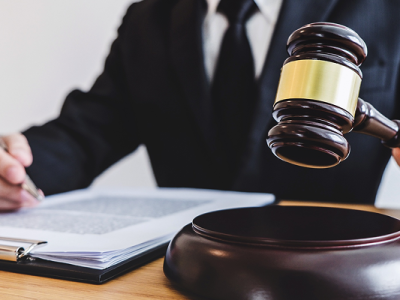
“It will be of little avail to the people that the laws are made by men of their own choice if the laws are so voluminous that they cannot be read, or so incoherent that they cannot be understood.”
- James Madison, Father of the US Constitution and the Author of the Bill of Rights.
I bet you have wondered who wrote the American Constitution, the supreme law of the United States.
James Madison played a crucial role in drafting the American Constitution and its ratification. The first 10 amendments of the Constitution, better known as the Bill of Rights were authored by him. A founding father of the United States, he also served as America’s 4th President.
Purpose Of The US Constitution

Post-independence the Articles of the Confederation governed the working of the land. But distinct state laws were absent. This led to the formation of the Constitution which was to be implemented on a national level but vested enough power to the states to form their own set of laws.
The Constitution protects the federal structure of the United States of America. It guards the three main tenets which serve as the sources of law in the united states. They are:
- Protection of the inherent rights of any American citizen.
- A government is represented by the people(Republic).
- The distinct separation of powers between the organs of the government.
The governance system of the US has a federal structure. There is a clear separation of powers between the three organs of the government, the Legislature, the Executive, and the Judiciary.
Each state is vested with the power to administer its own laws.
The Constitution is, however, the supreme law of the land that protects the boundaries between states and various organs of the government.
The Constitution consists of Senate-ratified treaties, Acts passed by Congress, Executive-approved legislations, and previous judgments passed by the Courts of the land(Doctrine of Stare Decisis).
How Does The Constitution Protect Individual Rights?

The first 10 amendments of the US Constitution, known as the Bill of Rights protect the citizen’s rights to free speech, carry arms for personal protection, freedom to form an assembly, petition, and even protect citizens against wrongful self-incrimination.
Marbury v. Madison established the system of Judicial Review which grants the Supreme Court the right to interpret provisions of the Constitution and keep up with the dynamic political and social systems.
Articles Of The US Constitution
There are seven Articles in the US Constitution. They are as follows:
Article 1

Article 1 of the US Constitution talks about the following provisions:
- Section 1- Legislative Powers are vested in Congress.
This Article sheds light upon the theory of the Separation of Powers. Congress can only make use of the powers granted in the Article.
- Section 2- House of Representatives.
The representatives are to be chosen by the people of each state. Eligible voters must have attained 25 years of age, must inhabit the state they are voting from, and must have been a resident of the US for a minimum of 7 years.
Representation in the legislature and taxes are proportionate to the population of the area.
The houses are to appoint their speakers and other officers. The House Judiciary Committee initiates impeachment proceedings.
- Section 3 deals with the composition, election, qualifications, and impeachment of Senators.Section 4 deals with Congressional elections and sessions.
Section 8 is crucial as it enumerates the powers of Congress. Section 9 deals with the limitations of federal powers.
Article 2

Article 2 lays down the provisions regarding the executive wing of the government.
- Section 1 and 2 deal with the executive powers vested on the President and the Vice-President, their qualifications for the office, and their duties.
It dictates their term of office as well. It deals with the method of election of the President through the powers delegated to the legislature. The Electoral College consists of electors from all states, each of whom votes by “Ballot for two persons”
- Section 4 deals with the process of impeachment of the President.
Article 3

In Article 3 deals with the Judicial wing of the federal system.
- Section 1 deals with the Judicial power of the federal courts and the number of courts. It establishes the paramount power of the Supreme Court.
- The Supreme Court has laid down the power of Congress to establish lower courts.
- Section 2 lays down the provisions regarding the originate and appellate jurisdiction of the Supreme Court. It talks about the jurisdiction of several courts and trial by jury.
- Section 3 establishes treason to be an act of waging war against the government.
Article 4

Article 4 elaborates on the relationship between different states and the states and the Union government. This is crucial for the peaceful functioning of a federation.
The “full faith and credit” clause lays down the need for all states to honor all pieces of public legislation as well as judicial decisions of all Courts of the states.
Another important feature of this Article is that it establishes the Rights of extradition of the state regarding fugitives and the rights of fugitive slaves. Section 4 lays down provisions against domestic violence.
Article 5

Article 5 talks about a provision of law that is a most important part of a federal state- the amendment of the Constitution. An amendment to alter the Constitution may be proposed by Congress which would require it to be ratified by two-thirds of the House of Representatives as well as the Senate.
The State Legislature may also desire and cause an amendatory convention, which can be called by the Congres. In Hollingsworth v. Virginia(1798), the Supreme Court ruled that the assent of the President was not mandatory for the passing of an amendment.
Article 6

This Article lays down that the Treaties and legislations passed in accordance with the provisions of the Constitution. It also holds that no government official shall be elected on the basis of a religious test. This ensures the absence of bias on the grounds of religion.
It is also established that the United States Government is responsible for all the debts incurred by it before the enactment of the Constitution.
In McCulloch v. Maryland, the esteemed Supreme Court rules that while the State governments enjoyed certain implied powers, they had no right to interfere in the workings of the federal government.
Article 7

Article 7 establishes the number of states that needs to ratify the Constitution and any further amendment, for it to be applicable. A total of nine of the thirteen states need to ratify it in order to make the Constitution the law.
Amendments- How Many Have So Far?

Apart from these, the Constitution consists of amendments. There have been a total of 33 amendments approved by the Congress and 27 have made it into the Constitution.
The amendments have amended the Constitution on the following lines-
- The rights of free speech, assembly, and bear arms.
- Rights against unwarranted seizure and arrest.
- Rights against self-incrimination and double jeopardy.
- Rights against slavery, servitude, and rights to a free and fair trial.
- Right to vote, and participate in Presidential elections.
Conclusion
It is evident so far that the Constitution of the US, its interpretation, and implications are vast and inexhaustive. Amendments are passed keeping the supreme law of the land up to date with the dynamic socio-political scenarios. This study serves as a guide to the Constitution as the primary tenet of law in the United States.
Hope the article was an informative one.
Do let us know what you think about it!
Read Also:



https://simplylawzone.com/article-2-of-the-us-constitution/